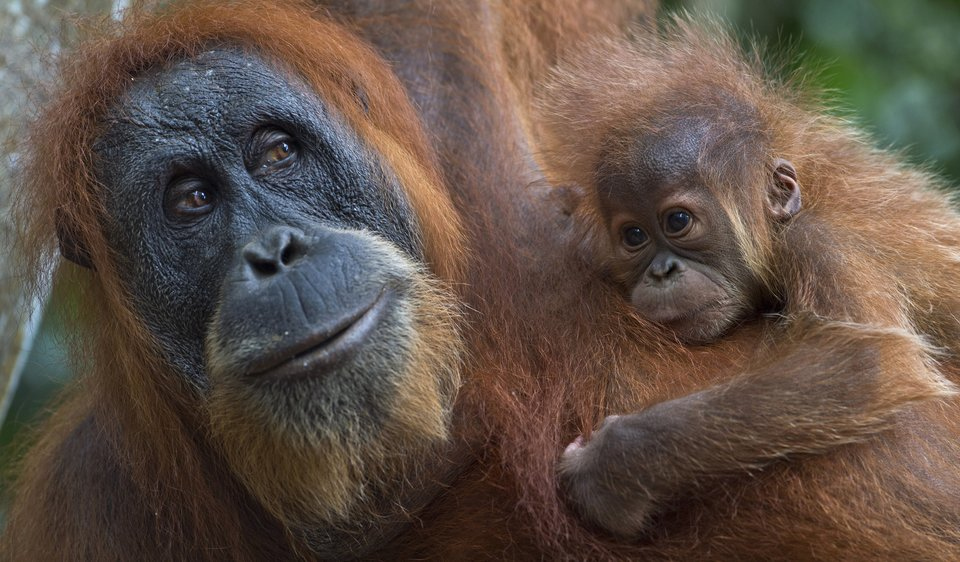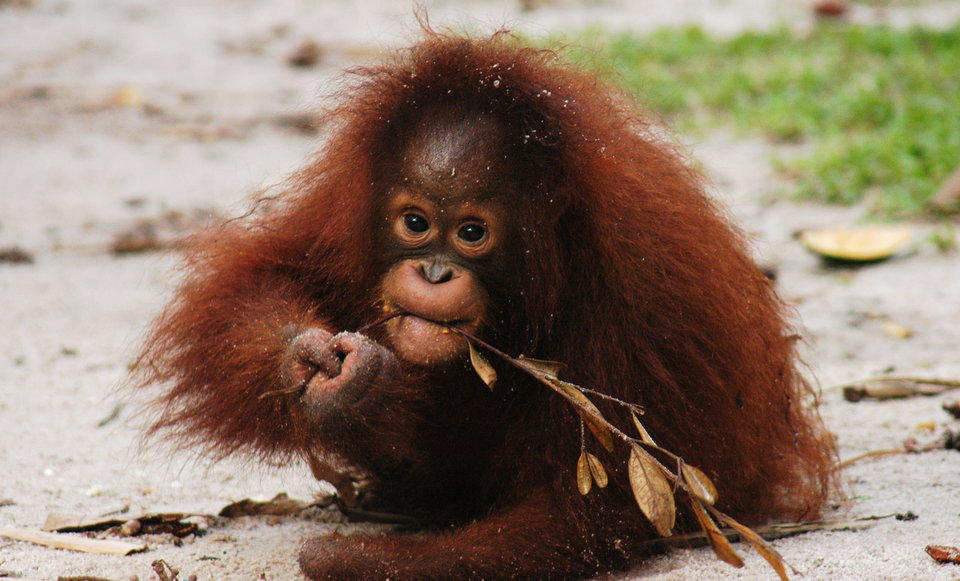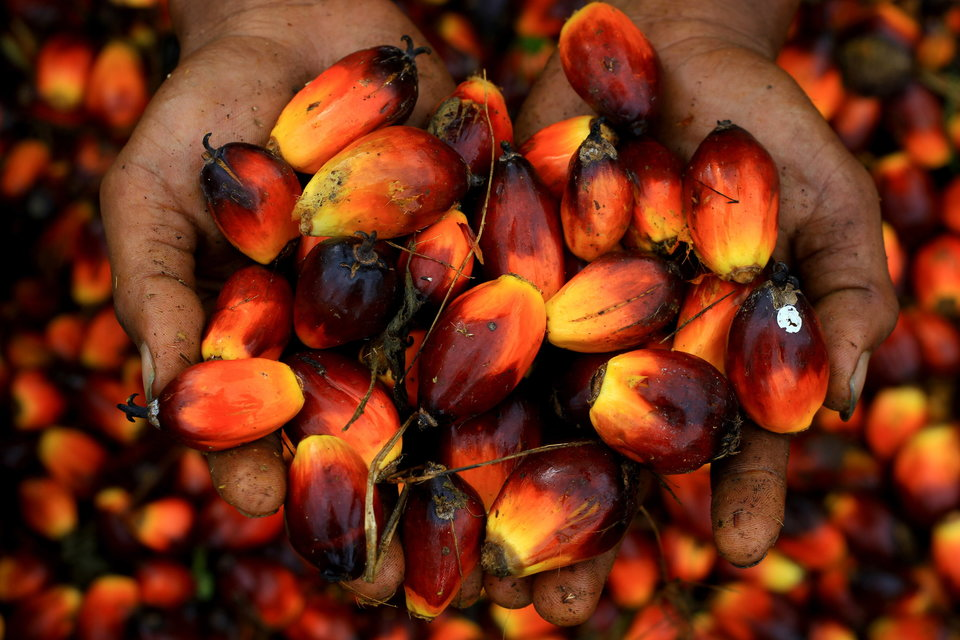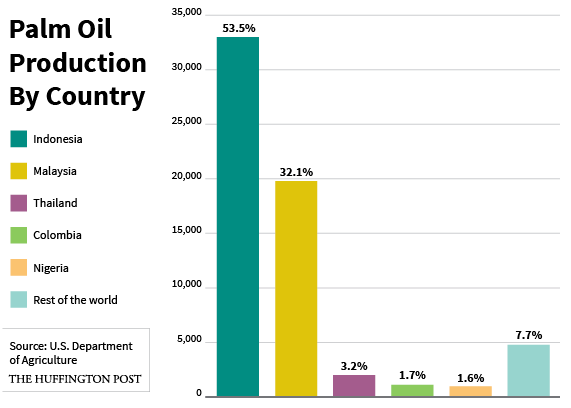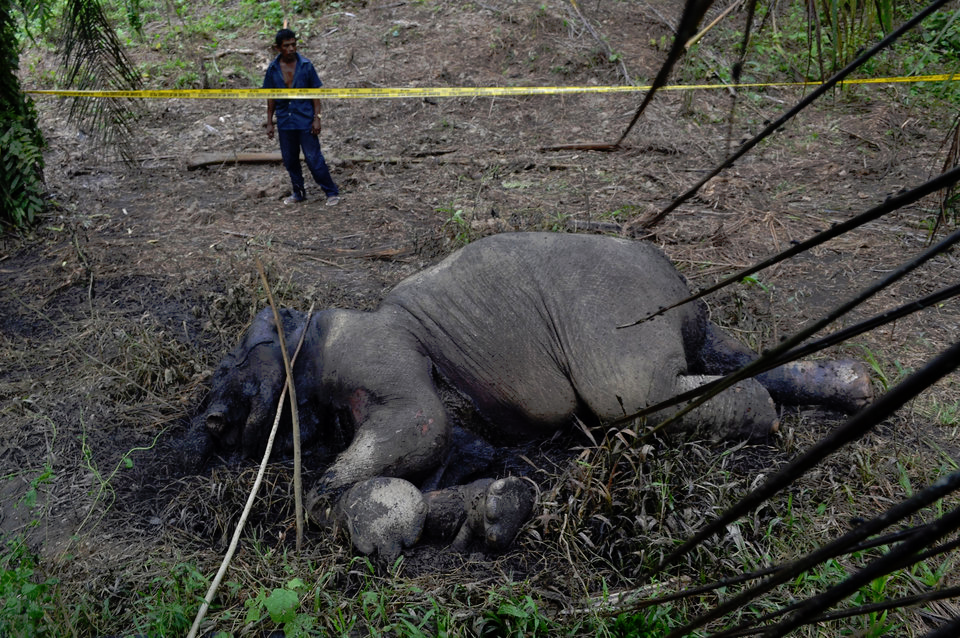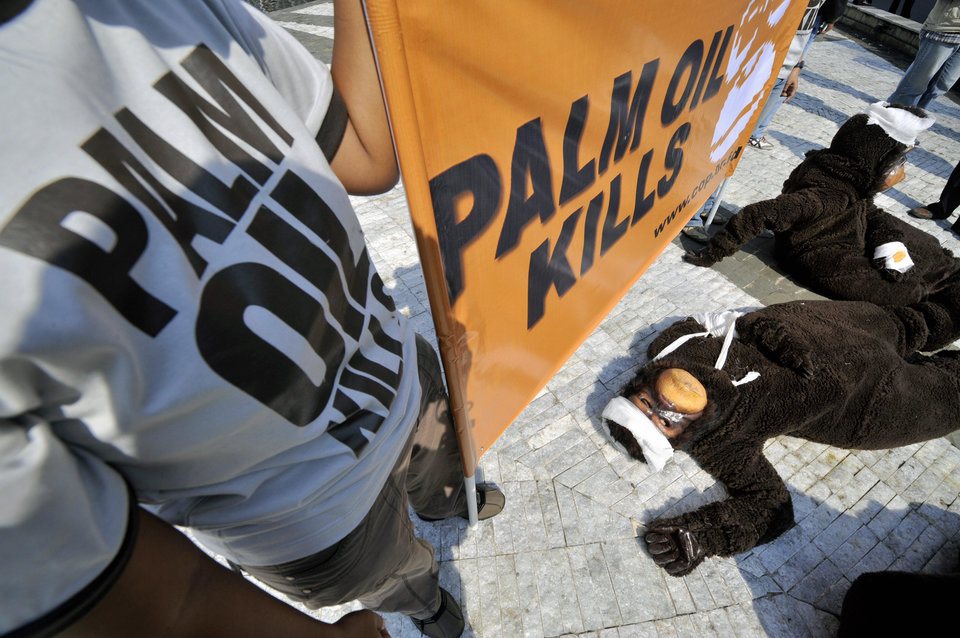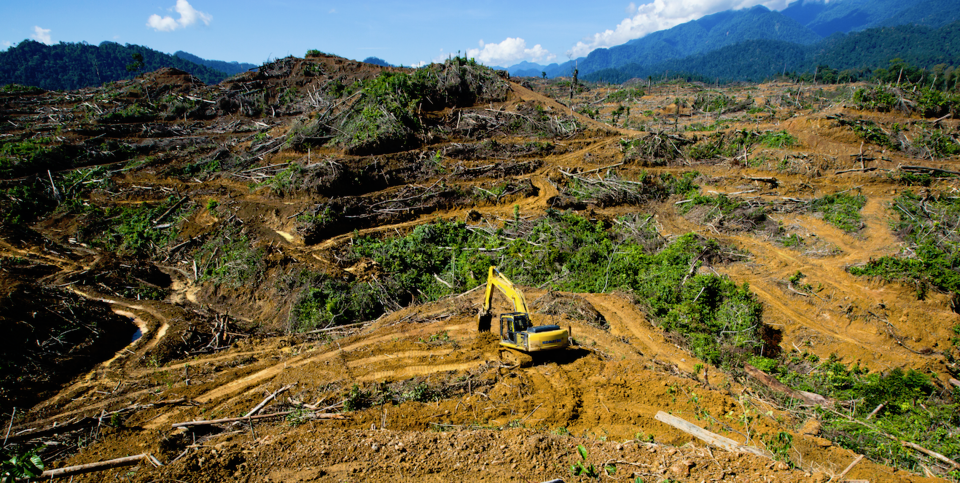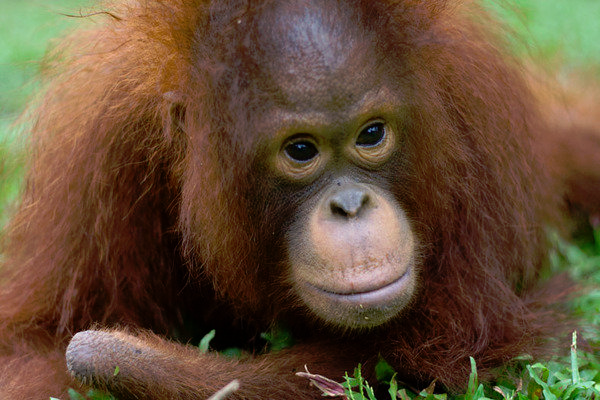 |
| Reviews and Templates for Expression We |
Palm Oil Is In Everything -- And It's Destroying Southeast Asia's Forests
It was late evening. The skies were dark and dogs were howling. Into the BOS Nyaru Menteng Orangutan Rescue Center on the island of Borneo rushed a rescue worker cradling a tiny bundle in his arms.
He handed over the precious package to the manager on duty. Inside, with a face as small as a mouse’s, was a 3-month-old orangutan.
Those who were there that day say there are two things they remember most about their first meeting with the baby ape: her intelligent eyes, big and bright; and her fragile left arm -- half of which was conspicuously missing.
The baby’s hand had been hacked off.
“Infant orangutans, who ride on their mothers’ stomachs by holding onto their long hair, have incredibly strong grips. They do not let go,” Richard Zimmerman, whose organization Orangutan Outreach helps facilitate the rescue and rehabilitation of wild orangutans, told The Huffington Post. “The baby’s hand was chopped off -- most likely to pry her off her mother.”
Rescuers believe that the infant and her mom had been driven out of their forest home when it was destroyed to make way for a palm oil plantation. Starving, disoriented and too weak to climb, the mother ape was likely walking on the forest floor in search of food when she encountered the humans who would kill her and maim her child.
Rescuers named the baby orangutan “Kesi,” Swahili for “child born in difficult times.” That name is apt for many a wild orangutan living today.
A hundred years ago, an estimated 230,000 orangutans roamed the earth. Today, fewer than 50,000 are left in the wild, living exclusively on the islands of Borneo and Sumatra -- islands that happen to be ground zero of one of the world’s most controversial and rapidly growing industries: palm oil.
Over the past 20 years, tens of thousands of wild orangutans have been killed, maimed or orphaned as a direct result of the palm oil industry.
Since 2006, the year Kesi was rescued, an estimated 1,500 orangutans have been clubbed to death after wandering onto palm oil plantations. Thousands more have died due to the widespread deforestation caused by the cultivation of palm oil.
The habitat destruction and conversion of forest associated with palm oil is “currently the greatest threat” to the future of wild orangutans, whose survival is entirely dependent on the health of rainforests, said Robert Shumaker, the Indianapolis Zoo’s vice president of conservation and life sciences.
“[Extinction] will be the sad reality if forest continues to be destroyed to promote the development of palm oil,” he said.
Experts estimate that orangutans could be extinct in the wild in 25 years or less if this rate of loss continues.
It's possible that you've never heard of palm oil, but you've almost certainly come into contact with it -- probably multiple times every single day.
Unavoidable in modern life, palm oil and its derivatives are found in thousands of products worldwide, from lipstick and toothpaste to donuts, candy bars and bio-diesel.
An extremely versatile commodity that's cheaper and more efficient to produce than other vegetable oils, palm oil is currently used in half of all consumer goods. (The commodity has many alternative names on ingredient lists.)
Consumption of palm oil has quintupled globally since 1990. The United States and Europe are its top consumers, but the desire for the commodity is growing everywhere. Demand is estimated to more than double by 2030 and triple by 2050.
Some of this increased demand will certainly come from the U.S., partially thanks to the Food and Drug Administration's ban on trans fat. Though by no means healthier, palm oil is set to be the “clear alternative” for food producers, experts say.
After the FDA required labeling of trans fats in food products in 2006, palm oil imports into the U.S. increased by 60 percent, according to Time.
“The labeling rule gives us a pretty clear indication that actually banning trans fats is going to further increase U.S. imports of palm oil,” Jeff Conant, who leads the international forests program at the Friends of the Earth environmental group, told the outlet.
The impact that this ubiquitous commodity -- now a $44-billion-a-year industry -- has already had on the planet is staggering. Activists say it is one of the most pressing environmental and humanitarian concerns of our time.
The equivalent of 300 football fields of rainforest is destroyed every hour to make way for palm oil plantations, according to the World Wide Fund for Nature. This destruction has decimated the habitat of endangered creatures, deeply scarred local communities and is a critical -- though oft-overlooked -- factor in climate change.
A lack of transparency in the industry means there are no reliable numbers to show the exact extent of deforestation caused specifically by palm oil. However, many environmentalists agree that palm oil, along with timber for paper and pulp, is one of the leading drivers of deforestation in Indonesia and Malaysia. The two countries produce more than 85 percent of the world’s supply between them. Most oil palms are grown on the islands of Sumatra, in Indonesia, and Borneo, which is shared between Indonesia, Malaysia and Brunei.
The commodity is the number one cause of forest loss in Indonesia, accounting for 75 percent of deforestation in some areas of Borneo, according to a 2013 Greenpeace study. The forests of Indonesia and Malaysia are projected to vanish completely in 20 years if deforestation is not curtailed.
Borneo, which boasts one of the world’s oldest rainforests, and Sumatra -- the only place on earth where tigers, rhinos, orangutans and elephants live together -- are two vital biodiversity hotspots in Southeast Asia, home to many unique and now-endangered creatures.
The conversion of forest on these islands for palm oil production has had an “outsized impact on threatened species,” including the critically-endangered Sumatran tiger, elephant and rhino, said conservationist and MongaBay.com founder Rhett Butler. A 2009 study called palm oil the “single most immediate threat to the greatest number of species.”
But it’s not just animals who are being threatened by this industry. Palm oil has also impinged on the livelihood, rights and dignity of indigenous communities.
The Indonesian government has been handing over swathes of indigenous lands to private companies for palm oil cultivation since the 1960s, according to Tomasz Johnson, forest campaigner at the Environmental Investigation Agency. Corrupt government officials and unscrupulous plantation owners have also been known to illegally seize indigenous land.
“What this means is that self-sufficient communities are reduced to being labourers in their own land,” Johnson said in an email. “They go from being resilient and food-secure, with their own resources, to being totally reliant on low-paid wage labor in plantations... In areas where communities are more forest dependent, such as some areas of Borneo, it can have a devastating impact on their ability to survive.”
Take the Dayak Benuaq tribe in the remote Bornean village of Muara Tae. For two decades, the community has been fighting to protect its ancestral lands from the bulldozers of several palm oil companies. But according to the EIA, the tribe has been oppressed by both the government and the companies involved in the land grab.
A paramilitary unit of the Indonesian National Police has been called in to suppress resistance and the government has withheld village funds as a bullying tactic, Johnson said, adding that the tribe’s land is now “almost entirely occupied” by a coal mine and two palm oil plantations. This is land that the Dayak Benuaq people have relied on for centuries for sustenance, medicine, culture and identity.
“This is the last remaining forests that we have and the only land we have to survive,” a community elder told the EIA in 2012. “If my forests are gone, our lives will end.”
The palm oil industry has also been associated with widespread human rights abuse, including forced and child labor, according to the U.S. Department of Labor. “[A]mong the estimated 3.7 million workers in the industry, are thousands of child laborers and workers who face dangerous and abusive conditions," Bloomberg News found in 2013. "Debt bondage is common, and traffickers who prey on victims face few, if any, sanctions from business or government officials."
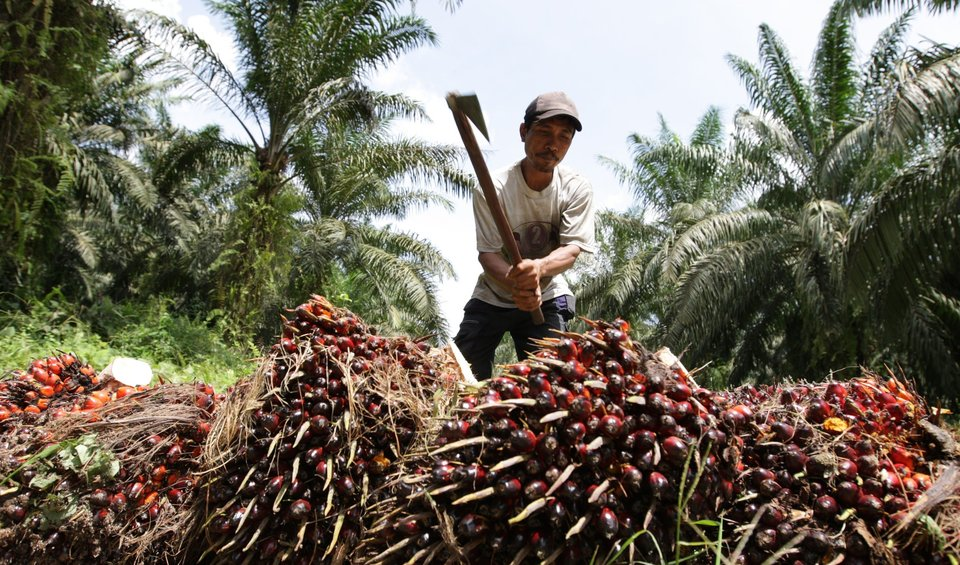
The production of palm oil has also had a major impact on climate change.
Palm oil cultivation in Indonesia and Malaysia has been conducted disproportionately in high carbon areas like tropical forests and carbon-rich peatlands. Because of this, the deforestation of such areas to make way for plantations has released particularly large volumes of climate-warming gases into the atmosphere.
It’s estimated that tropical deforestation is responsible for between 15 and 20 percent of global warming emissions -- more than the emissions from cars and other forms of transportation. In areas covered in peat soils, the problem is even more severe. When peatlands are cleared and drained for palm oil cultivation, an enormous amount of carbon dioxide is released.
In Indonesia, the illegal but widespread slash-and-burn method of clearing forest for plantations spews huge quantities of greenhouse gases into the atmosphere and contributes to the dangerous smog problem in the region. It can also cause peatland fires, which have been known to burn for months -- and in some cases, years.
More than 60 percent of Indonesia’s carbon emissions come from the degradation of forest and peatlands. The country, which is being deforested faster than any other nation in the world, is the planet’s third-worst producer of greenhouse gases behind the U.S. and China.
Environmental groups have been sounding the alarm for years about the devastating impacts of palm oil, but these warnings have largely been drowned out by the clamoring for more and more of the oily stuff by oblivious consumers worldwide.
The paradigm, however, has started to shift.
Thanks largely to the efforts of NGOs and grassroots activists, more consumers are now informed about the impacts of palm oil, and this knowledge has propelled concerned citizens to pressure companies to rethink their palm oil policies.
“Two years ago, palm oil wasn’t an issue that most people cared about, or was covered by the mainstream media,” said Gemma Tillack, the agri-business campaign director for the Rainforest Action Network. “But that has changed.”
Several of the world’s biggest palm oil growers, traders and buyers have made so-called zero-deforestation commitments in recent years, promising to move towards more sustainable and ethical production. In 2013, for instance, the Singapore-based Wilmar International, which controls almost half of the world’s trade in palm oil, vowed to have no deforestation in its supply chain within two years and committed to stop working with suppliers that burn peat and exploit local communities. Big-name palm oil buyers like Nestlé, General Mills, Kellogg's and the Hershey Company have made similar promises.
Another big win came last month when 16 industry leaders, including PepsiCo, Colgate-Palmolive and Starbucks, penned an open letter to the Roundtable on Sustainable Palm Oil to urge the organization to enforce stricter sustainability standards.
The RSPO, which has more than a thousand members representing every sector of the industry, was established in 2004 to promote the production and use of sustainable palm oil, but has been widely criticized for inadequately monitoring its members and for not doing enough to curb deforestation.
The letter to the RSPO was “the best news I’ve seen in recent times,” Robert Hii, a Toronto-based sustainable business consultant, wrote on his blog in June. The signees “hold 5 trillion dollars worth of assets that can break or change an industry,” he wrote.
The conversation has moved to the government level as well. The European Union has started discussions about importing only certified sustainable palm oil by 2020, and leaders in Indonesia and Malaysia have started to respond to international pressure to crack down on deforestation. In 2011, Indonesian President Joko Widodo declared a moratorium on destroying primary forests and peatland -- a ban he reaffirmed this year.
Yet for all these promises and fervent show of industry support, real change has been slow to come.
Talk, as everyone knows, is cheap.
“[‘Zero-deforestation’] has become a popular slogan, a brush-off tool for corporations under attack by NGOs,” Hii told HuffPost. “It’s become an outlandish statement especially when made by corporations that are still trying to trace their supply of palm oil.”
Traceability -- knowing exactly where a batch of palm oil comes from -- remains one of the greatest challenges facing the industry. An estimated two-fifths of the world’s palm oil is grown by smallholders, small-time farmers whose land is often tucked away in remote areas where regulatory oversight is poor. Add to that the mammoth issues of corruption and crime, both rife in the industry, and the reliable tracing of the supply chain becomes almost laughably difficult.
The vast majority of palm oil growers in Indonesia are not mitigating the social and environmental impacts of their plantations, found a 2014 report by the EIA called “Permitting Crime.” In the palm oil concessions, or cultivation areas, studied for the report, the estimated rate of illegality was a staggering 80 percent. The report also documented the alarming number of smaller, opaque companies that are growing palm oil by illegally destroying huge tracts of forests.
“Generally speaking, the level of legal compliance within the sector is critically low, and law enforcement is very weak due to entrenched corruption,” the EIA’s Tomasz Johnson said. “For consumers, this means it’s very likely is that the palm oil they consume on a daily basis has been produced illegally. It almost certainly hasn’t been produced sustainably, in any meaningful sense of the word.”
Despite President Widodo's forest moratorium, primary forests in Indonesia also continue to be cleared at a dismaying rate. The Leuser Ecosystem on the island of Sumatra is one such example.“This massive and biodiverse rainforest is being carved up as we speak for new palm oil concessions,” Rainforest Action Network's Gemma Tillack said last week.
Ultimately, activists say that successfully tackling these complex and interconnected issues will require a concerted multi-pronged approach.
“The size and scale of the problem are really dramatic,” said Tillack. “There’s still not a lot of understanding about where palm oil is sourced from and how it’s being produced. It will take the full transformation of the supply chain to find a real breakthrough.”
Local and national governments and companies at every stage of the supply chain need to work together, Tillack said, to foster an environment of transparency and a dedication to not just forest preservation, but sustainability on a much broader scale.
Consumers, too, have an indispensable role to play.
“Consumer action is crucial,” Tillack said. “It's currently driving this change in the palm oil [industry]. We need to continue to put pressure -- it’s critical. Consumers need to call on companies to adopt responsible policies, continue to tell them that people care.”
With the demand for palm oil set to skyrocket, and the frontier for the commodity already pushing into other sensitive areas of Southeast Asia, Central America and West Africa, the time to act is now.
“We have a real opportunity to turn the tide,” Tillack said.
Truly sustainable and ethical palm oil for the whole planet may now seem like an almost impossible dream. But the survival of animals like Kesi the orangutan should give us hope that while much damage has been done, redemption is still possible, said Richard Zimmerman of Orangutan Outreach.
Today, almost a decade after her rescue, Kesi is thriving.
“She's a strong, dominant female who does not let a missing hand stop her from doing anything,” Zimmerman said. “We like to think that she doesn't 'just have one hand.' Rather, she has three instead of four.”
“Orangutans have a will to live that often seems extraordinary,” he added. “They survive under incredibly difficult circumstances.”
The future of Kesi's species is in our hands.
“Some populations of orangutans will not survive -- at least not where they are now... [but] we're confident that we'll be able to prevent extinction,” he said. “This all takes an enormous amount of time, money, resources, energy and coordination -- as well as cooperation within our networks, with the authorities, with the local people and with the companies who are deforesting the land. With so many moving parts it can be quite complicated. But we just keep doing everything we can to save them.
“We have no choice,” he concluded.“If we don't do it, who will?”
|
|
|
|
Copyright 2011 Energy and Technical Services Ltd. All Rights Reserved. Energyts.com |
